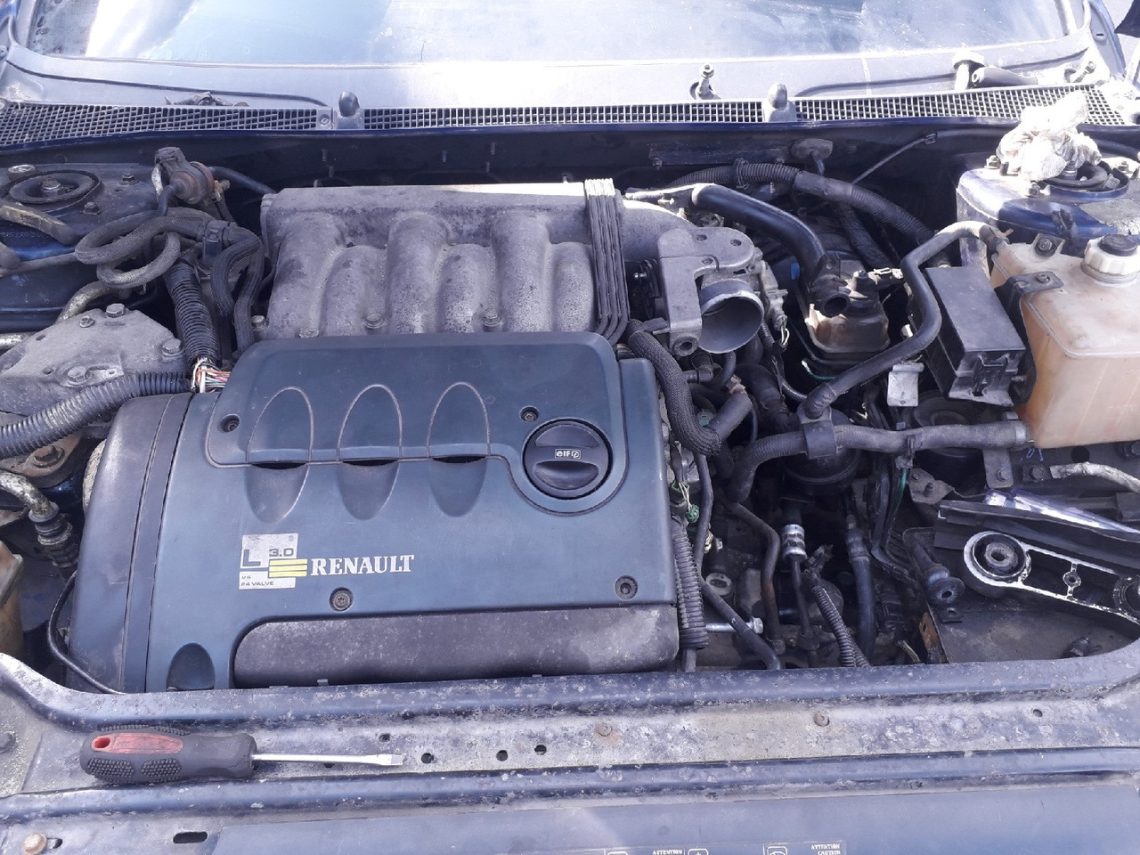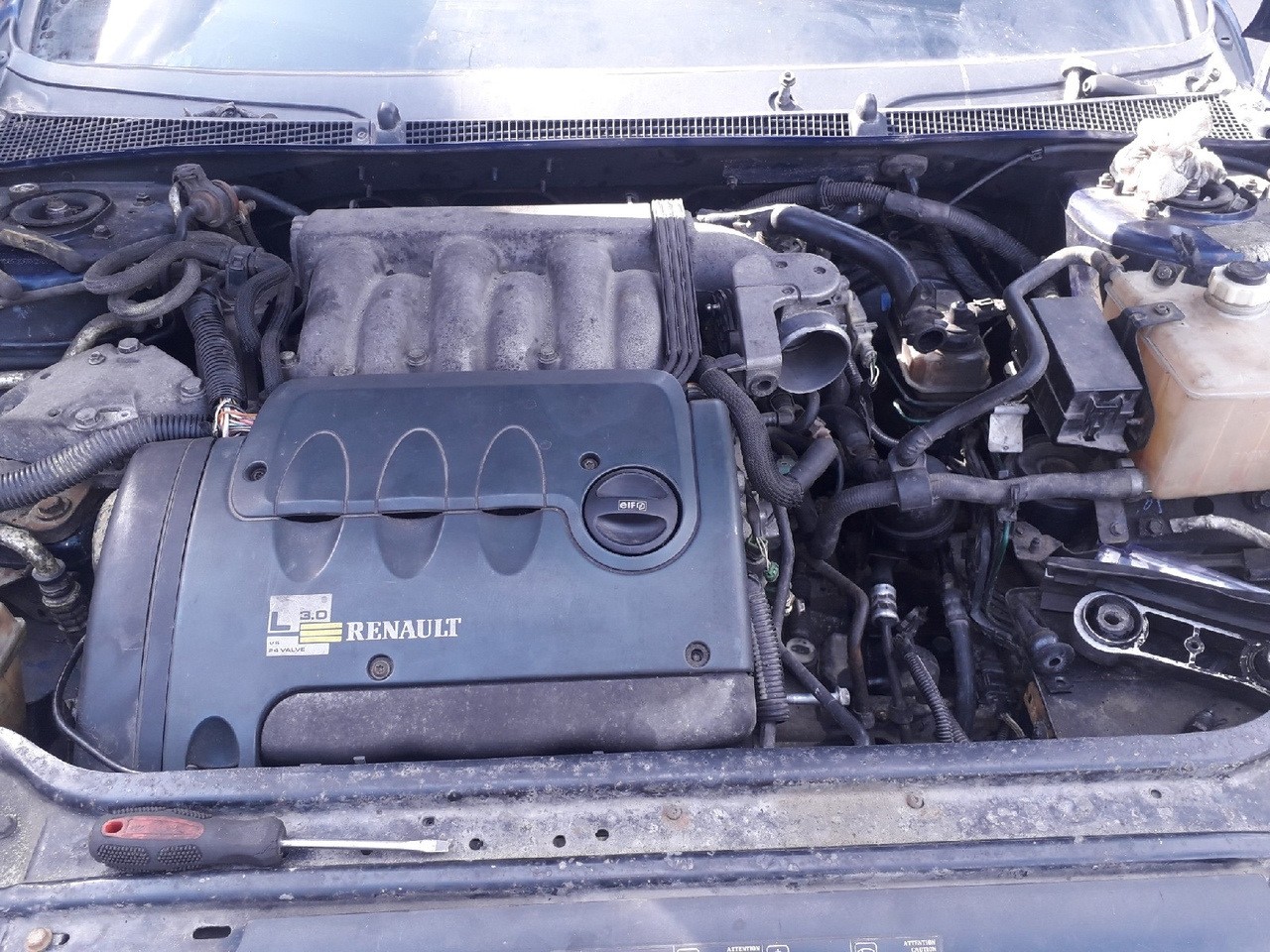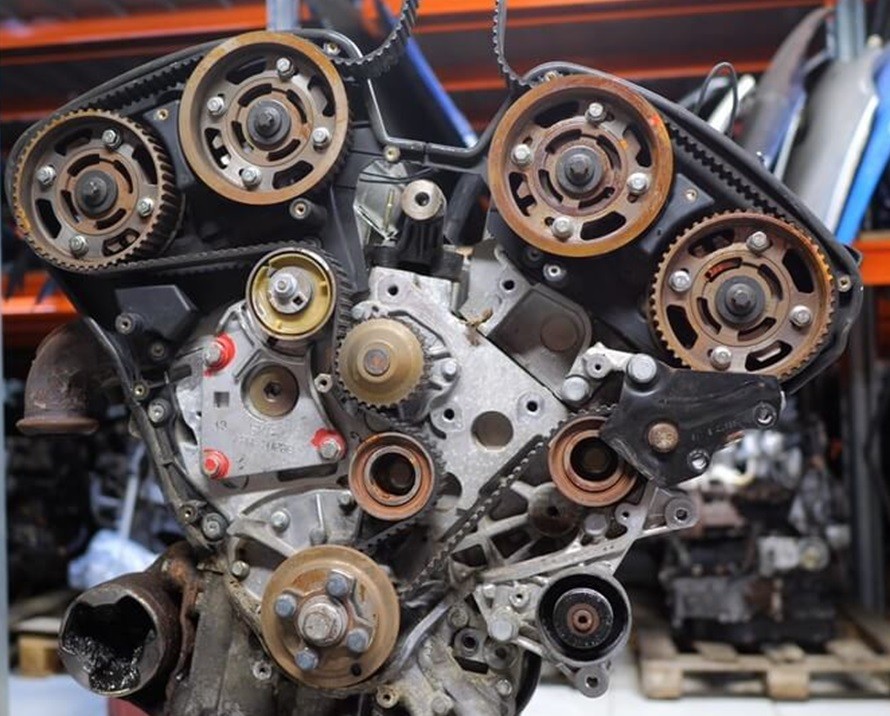
Renault L7X engine
Content
To replace the outdated PRV engine line, French engine builders have proposed a new ESL. The first-born in this family was the power unit L7X.
Description
The engine was developed by Renault engineers together with Peugeot-Citroen specialists in 1997. Production was carried out at the plant in Douvrin (France).
The L7X is a 3,0-liter V-twin petrol engine producing 190 hp. with and a torque of 267 Nm.

It was installed on Renault Safrane, Laguna, Espace and "charged" Clio V6 cars. Under the index ES9J4, it can be found under the hood of Peugeot (406, 407, 607 and 807), and under the index XFX / XFV on the Sitroen XM and Xantia.
The cylinder block and cylinder head are made of aluminum alloy. Cast iron sleeves.
The cylinder head has two camshafts and 12 valves. The intake shafts have been equipped with phase shifters since 2000.
Timing belt drive with a mechanical tensioner roller (until 2000 it was hydraulic). The resource is 120 thousand km, but it is better to change it earlier.
A feature in the cooling system is the pump. Before equipping the motor with a phase shifter, two types of water pumps were used, differing in the diameters of the mounting holes (73 and 63 mm).
A boosted engine was installed on the Clio V6 (see table). Before restyling, its power was 230 hp. s, in the post-styling version - 255.
Technical specifications
| Manufacturer | Renault Group |
| engine's type | V-shaped |
| Cylinder collapse angle, deg. | 60 |
| Engine volume, cm³ | 2946 |
| Power, hp from | 190 (230-255) * |
| Torque, Nm | 267 (300) * |
| Compression ratio | 9,6 (11,4) * |
| Cylinder block | aluminum |
| Number of cylinders | 6 |
| Cylinder head | aluminum |
| Cylinder diameter, mm | 87 |
| The piston stroke, mm | 82.6 |
| Number of valves per cylinder | 4 (DOHC) |
| Timing drive | belt |
| Hydraulic compensators | Yes |
| Turbocharging | no |
| Camshaft adjuster | phase regulator** |
| Fuel system | injector |
| Fuel | gasoline AI-95 |
| Environmental standards | EUR 3-4 |
| Resource, outside. km | 300 |
*data in brackets for Clio V6, **installed since 2000.
What do modifications mean?
Over the entire period of production, the engine has been repeatedly upgraded. The changes affected attachments and their fastening. The mechanical part remained unchanged. The exceptions are the Clio V6 and the Venturi 300 Atlantique, which had turbocharged engines.
Received changes high-voltage coils. The triple (common) coil has been replaced with individual coils.
The motor mounts were changed in accordance with the model of the car on which they were installed.
Specifications have practically remained the same.
| Engine code | Power | Torque | Compression ratio | Years of issue | Installed |
|---|---|---|---|---|---|
| L7X700 | 190 l. s at 5500 rpm | 267 Nm | 10.5 | 1997-2001 | Renault Laguna I |
| L7X701 | 190 l. s at 5500 rpm | 267 Nm | 10.5 | 1997-2001 | Laguna I, Grandtour (K56_) |
| L7X713 | 190 l. s at 5750 rpm | 267 Nm | 10.5 | 1997-2000 | Saffron I, II |
| L7X720 | 207 l. s at 6000 rpm | 285 Nm | 10.9 | 2001-2003 | Come on I |
| L7X721 | 207 l. s at 6000 rpm | 285 Nm | 10.9 | 2001-2003 | Forward (DE0_) |
| L7X727 | 190 l. s at 5750 rpm | 267 Nm | 10.5 | 1998-2000 | Space III |
| L7X731 | 207 l. s at 6000 rpm | 285 Nm | 10.9 | 2001-2007 | Lagoon II, Grand Tour II |
| L7X760 | 226 l. s at 6000 rpm | 300 Nm | 11.4 | 2000-2002 | Clio II, Lutecia II |
| L7X762 | 254 l. s at 5750 rpm | 148 Nm | 11.4 | 2002 | Clio II, Sports (CB1H, CB1U) |
Reliability, weaknesses, maintainability
Reliability
According to car service specialists and reviews of car owners, the motor is reliable and unpretentious. We must pay tribute, at first many had problems with the timing. But this was not a constructive miscalculation, but an elementary ignorance of the features of the L7X.
Subject to the maintenance regulations and the fulfillment of the manufacturer's requirements, the engine greatly overlaps the resource embedded in it.
Weak spots
There are no stable weak points in the unit. There were cases of electrical failures due to oxidized contacts and an elementary loss of chips from the connectors.
The timing belt requires special attention. An increase in its service life threatens to break, and, as a result, a major overhaul or replacement of the engine.

The engine can not stand even a short-term overheating. The cylinder block, cylinder head and on-board computer fail. Constant monitoring of the operation of the temperature sensor, thermostat and elementary monitoring of devices during the trip completely eliminates the possibility of overheating.
Maintainability
The motor is considered repairable. Doubts in this matter are caused by an aluminum cylinder block. With internal damage, it cannot be repaired.
There are no problems with spare parts in specialized stores. But the prices for some of them are sometimes quite high. For example, a timing belt costs between $300 and $500. Its replacement is also not cheap. On some car models, the engine must be removed to replace it.
Therefore, before starting repairs, you need to carefully analyze the possible costs. It may happen that the option of purchasing a contract engine (average price of 60 thousand rubles) will become the most acceptable.
The firstborn of the ESL L7X series turned out to be successful and reliable. But subject to and implementation of all recommendations of the manufacturer for its maintenance and operation.

